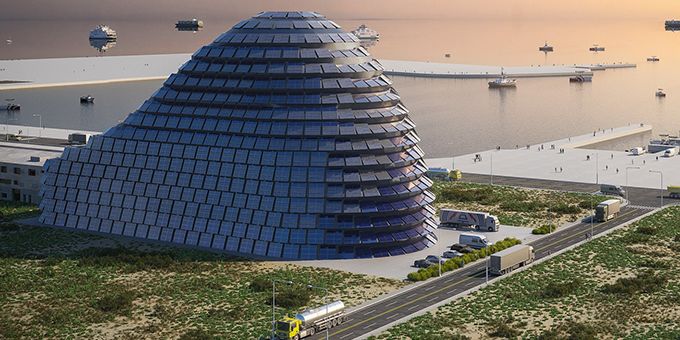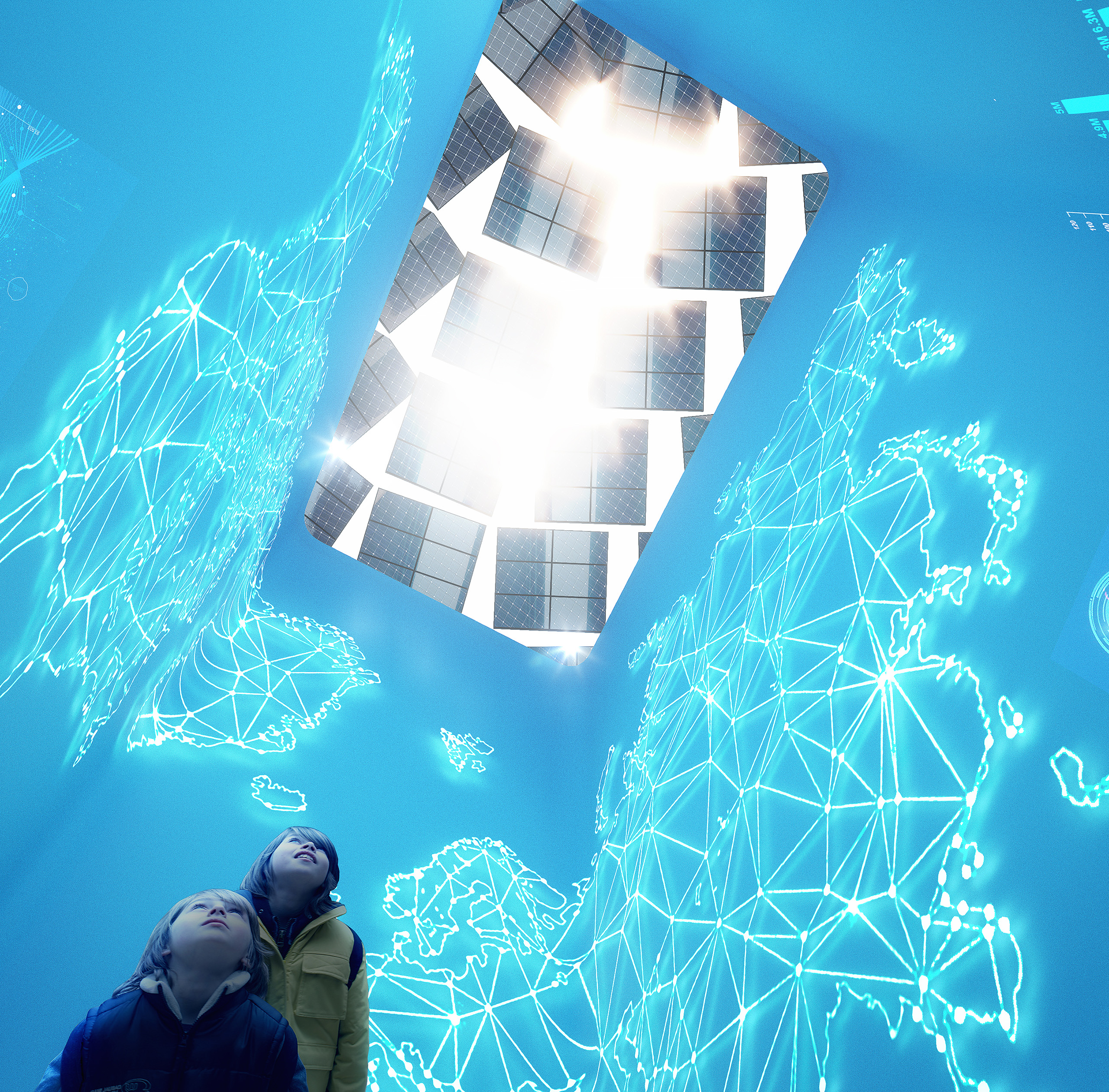Anticipating Taiwan’s planned transition to green energy, the features of the Sun Rock building, from its shape to its façade, are focused upon generating solar energy as efficiently as possible.
 MVRDV’s “Sun Rock” Is A Built Manifesto for Taipower’s Carbon-free Future
MVRDV’s “Sun Rock” Is A Built Manifesto for Taipower’s Carbon-free Future

Case Study from | MVRDV
Containing offices, a maintenance workshop, storage spaces, and a public gallery, Sun Rock is an operations facility for Taiwan’s government-owned power company Taipower, situated at the west coast of Taiwan. Anticipating Taiwan’s planned transition to green energy, the features of the Sun Rock building, from its shape to its façade, are focused upon generating solar energy as efficiently as possible. The building therefore acts as a definitive statement of intention, and a “manifesto in a building” to communicate Taipower’s goals to the public
Located at the Changhua Coastal Industrial Park, near to Taichung, the building’s primary purpose is for the storage and maintenance of sustainable energy equipment. The site for Taipower’s new facility receives a significant amount of solar exposure throughout the year, and so the rounded shape of Sun Rock is designed to maximise how much of that sunlight can be harnessed for energy. On the southern side, the building slopes gently downwards, creating a large surface area that directly faces the sun during the middle of the day. At the northern end, the domed shape maximises the area of the building exposed to the sun in the mornings and evenings.
The façade maximises this solar potential with a series of pleats, which support photovoltaic panels (mixed in with windows, where required) on their upper surface. The angle of these pleats is adjusted on all parts of the façade to maximise the energy-generating potential of the solar panels. As a result of these measures, the building can support at least 4,000 square metres of PV panels that would generate almost 1 million kilowatt-hours of clean energy per year – an amount of energy equivalent to burning 85 tonnes of crude oil – and making the building completely self-sufficient. Further design options are under consideration that would add an even larger area of PV panels, with calculations showing the building could generate up to 1.7 million kWh annually to contribute energy to the grid

“Of course, we aim to make all of our projects as sustainable as possible. Yet we see that projects can go beyond just being sustainable in themselves. This project has unique and fascinating potential”, says MVRDV founding partner Winy Maas. “The user is an energy company, which has allowed us to do more than usual. We cladded the entire façade with photovoltaics, maximising the energy gains to make it not only self-sustainable, for its own usage, but also allowing the building to become a tool of energy production, exporting electricity to the rest of the grid. This is achieved through a maximally efficient positioning of the panels. As a result, our design is completely data-driven. It’s always fun to see the results when you let analysis be the determining part of the design.”

At the heart of the building is the Data Room, a soaring atrium with real-time displays of data about Taipower’s operations and the amount of renewable energy the company generates. On the first floor, a gallery space provides a view onto the maintenance workshop, allowing the public an up-close look at the machines that make sustainable energy possible, from solar panels to massive wind turbine blades. A further gallery for exhibitions is included on the top floor, while at roof level, under the shelter of a dome of solar panels, is a terrace complete with trees for both visitors and Taipower employees to relax.
The sustainable energy-generating features of Sun Rock make the building more than simply an operations and maintenance facility; the design cleverly combines the building’s utilitarian spaces with a series of gallery spaces. The building is thus also an important communication tool for Taipower to publicly show their ambitions for a greener future.
Credits:
Architect
MVRDV
Founding partner in charge
Winy Maas
Partner
Wenchian Shi
Design team (competition)
Hui Hsin Liao
Mirco Facchinelli
Tseng-Hsuan Wei
Design team (schematic design)
Hui Hsin Liao
Daniel Diez
Mirco Facchinelli
Carolina Martin Peñuela
Chi Yi Liao
Tseng-Hsuan Wei
MVRDV NEXT
Yayun Liu
Visualisations
Antonio Luca Coco
Pavlos Ventouris
Jaroslaw Jeda
Emanuele Fortunati
Gianlorenzo Petrini
Copyright
MVRDV Winy Maas, Jacob van Rijs, Nathalie de Vries
Partners
Co-architect: Y.C. Hsu Architect & Associates
Contractor: Reiju Construction Co., Ltd.
Structural engineer: Chih-Hung Kao Structural Engineer & Associates
MEP: Chia Feng Mechanical & Electrical Corp.
The content & opinions in this article are the author’s and do not necessarily represent the views of AltEnergyMag
Comments (0)
This post does not have any comments. Be the first to leave a comment below.
Featured Product

